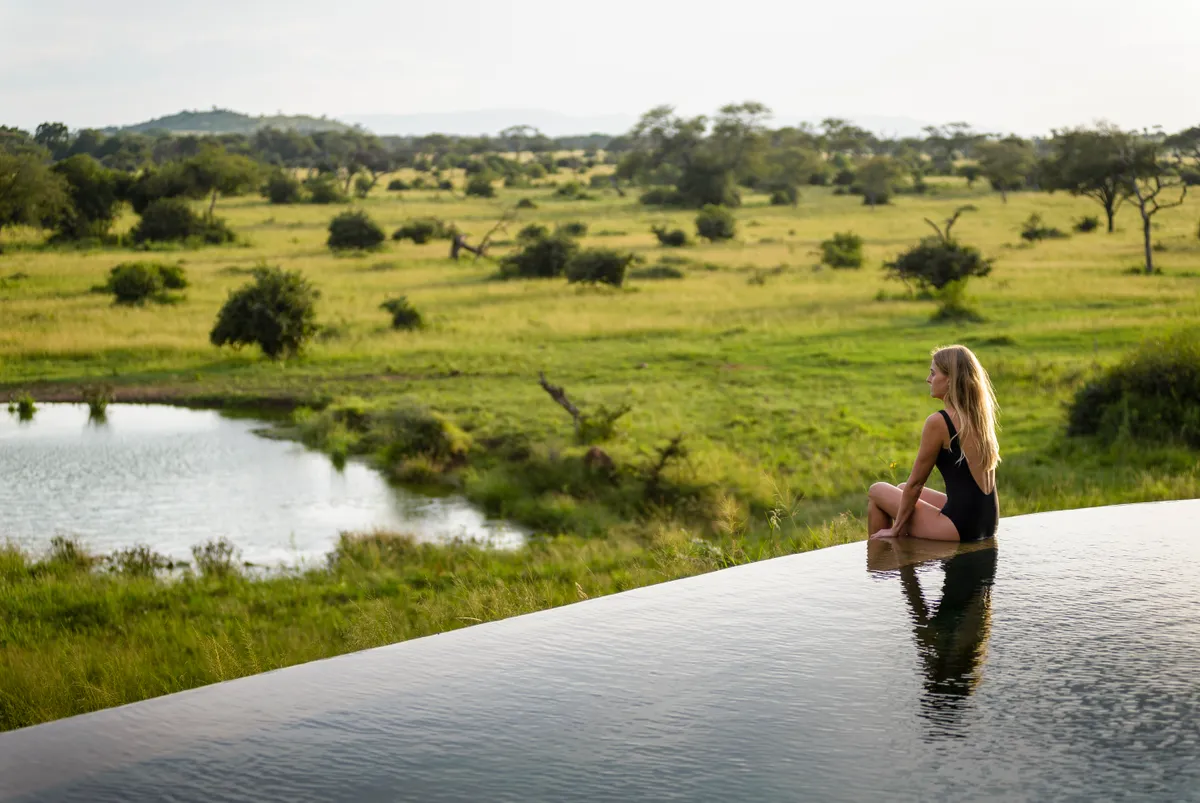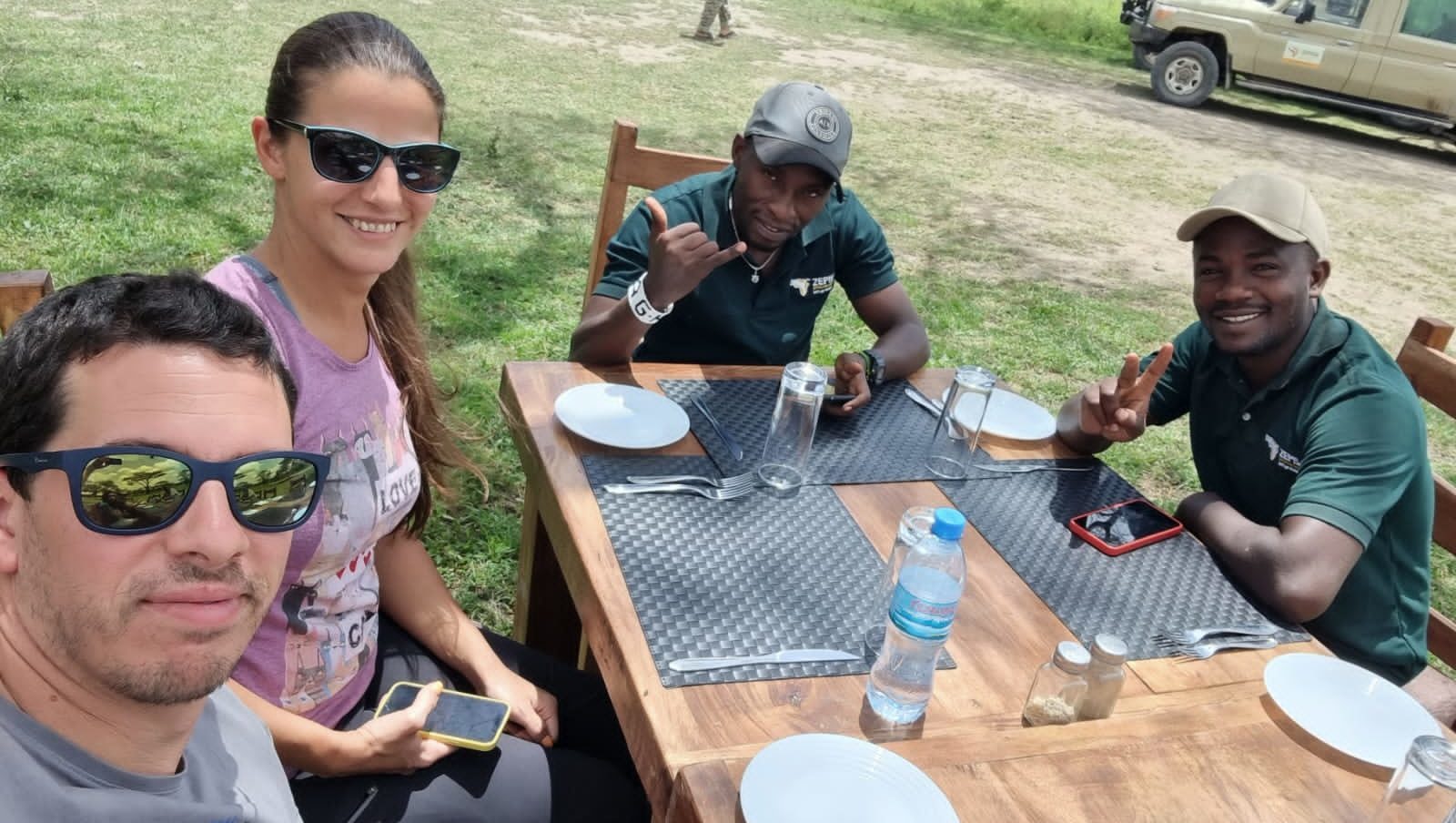How much does the Tanzania safari cost
Tanzania safari cost can range from $100 to $1000 per day depending on the type of safari, length of the trip, and any additional costs such as park fees, vehicle rental fees, and tips for guides and drivers
Design your trip
Design your trip
Tanzania safari costs: Budget, Mid-range & Luxury Safaris
Are you planning a safari in Tanzania? If so, you may be wondering, how much is Tanzania safari cost! The answer to this question is simple. Your Tanzanian safari will cost whatever you can afford.
Transportation, guides, and other safari-related expenses all contribute to the overall cost of your Tanzanian safari. The cost of your safari depends on the type of accommodation and the size of your group. It could range from a few hundred to several thousand dollars.
Your Tanzania safari costs can vary significantly depending on what activities or attractions you want to participate in. These could include hot air balloon rides or day trips to national parks. The cost of your Tanzanian safari will depend on your budget and the amenities you choose. Consider what you want to include in your trip and plan accordingly.
A budget Tanzania safari will cost $250 per person per day. This is the lowest rate option and is best suited for those who are on a tight budget.
A midrange Tanzania safari typically costs around $400 USD per person per day. A luxury Tanzania safari costs around $600-$1500 per person per day. All prices include transport, accommodation, meals, and activities.
What contributes to the overall expense of a Tanzania safari costs?
When planning your safari, consider the time of year. Think about the places you’ll visit. Decide on the duration of your trip. Choose where you’ll stay. Decide which activities you’ll do. Figure out how many people are going. Choose the level of luxury for your trip.
1. Specialized interests
Special-interest safaris, such as chimpanzees or bird watching, can be more expensive than standard safaris around Tanzania. This is because they require more specialized local knowledge and equipment to be successful.
Example: Chimpanzee tracking requires a guide with good experience in the region. Specialized equipment, like binoculars and cameras, is also necessary to capture the experience. Similarly, a bird-watching Safari may require more gear to identify the various species seen in the area.
In addition to the guide and equipment, specialized accommodations may be needed in order to ensure a comfortable and successful experience. All of these additional requirements can make these special-interest Safaris more expensive than a standard safari.
| Activities | Price range from.. |
|---|---|
| Wildlife Safaris | $ 200 USD Per Day |
| Photo Safaris | US$ 750 – US$ 1200 |
| Birding Safaris | US$ 400 – US$ 600 |
| Cultural Experience Tours | US$ 50 – US$ 300 ) |
| Balloon Safaris | US$ 550– US$ 650 |
| Boating & Canoeing | US$ 40 – US$ 60 |
| Mountain Climbing Kilimanjaro | US$ 750 – US$ 1300 |
| Wildebeest Migration Safari | US$ 60 – US$ 3805 |
| Diving & Snorkelling Trips | US$ 33– US$ 45 |
| Hiking & Walking Safaris | US$160 – US$ 180 |
| Chimpanzee Trekking | US$1050 – US$1300 |
2. Length of stay
The cost of full-package safaris is typically lower the longer the duration of the trip. The cost of a safari can be reduced by discounts on airfare, lodging, and other expenses.
Hiring a jeep and driver for your safari can be more affordable if you opt for a longer period of time. Park entry fees typically stay the same regardless of the duration of the trip. However, safari camps and lodges may offer discounts for trips that last longer.
3. Level of the comfort of accommodation
Camping is an affordable way to explore Tanzania. You can set up a tent, cook your own meals and immerse yourself in nature. It’s a great way to experience the beauty of the country without breaking the bank. It is much cheaper than staying in a hotel or resort, which usually requires a large deposit.
Accommodation options range from budget to luxury. Budget accommodation usually has basic amenities, such as shared bathrooms.
Midrange accommodation has air-conditioning, private bathrooms, and comfortable beds. Luxury accommodation has top-of-the-line amenities, such as swimming pools, gourmet restaurants, and spas. No matter what your budget is, Tanzania has something for everyone.
4. Location of the accommodation
Location is an important factor to consider when planning a Tanzania safari. Lodges close to national parks are typically more affordable than those with scenic views.
Save money by choosing a lodge outside of the park gates. This may also lower your entry fees. Additionally, more rural lodges may be more affordable than those located in more developed areas.
It is also important to research accommodation options to ensure the best possible value for money. Booking in advance can help you take advantage of early-bird discounts. Traveling during the low-tourist season can also help you avoid peak prices. These are two great money-saving tips.
5. Group size
The cost of a Tanzania safari is dependent on group size; the larger the group, the lower the cost per person. However, larger groups often lack the intimate and enjoyable experience that a private safari provides.
Private safaris offer more control over who you travel with. This can create a more meaningful experience as the group is closed. Additionally, private safaris often provide access to areas and activities that are not available to larger groups.
6. When you want to go
Tanzania is a popular safari destination. It has distinct high, mid-season, and low seasons. The timing of your trip can have a major impact on its cost.
The high season usually falls between June and October. During this time, accommodation, transport, and parking fees are more expensive. Additionally, the number of visitors is also at its highest.
During the low season (generally November to May) prices are lower, and the parks are much quieter. The weather can be unpredictable. It is important to keep this in mind when planning a trip.
- High season: July to October and December
- Mid-Season: Jan and Feb and June (about 20% off high season)
- Low Season: March to May and November (up to 40 % off high season rates)
Planning a trip to Serengeti? Consider booking during the shoulder and low seasons. Many tour companies and lodges offer off-peak rates during this time.
These rates are usually much lower. This period is usually during the long rainy season (March and April). The high season for wildlife watching is from late June to early July, and from late August to early September. This is when wildlife viewing is at its peak season
Safari in Tanzania cost: what’s included – and what’s not
A budget safari
A budget safari in Tanzania includes all the necessary amenities for a comfortable and enjoyable trip. This includes meals, transport, accommodation, game drives, park fees, a professional driver/guide, all transportation, and bottled drinking water. This does not include: – Airport transfers to and from the airport – Accommodation before and after the safari – Any local flights – Additional activities – Any special meals or drinks that are not mentioned in the itinerary.
If you wish to upgrade your experience, a hot air balloon safari is an activity to consider. Be aware that this will cost significantly more. The cost of your balloon safari will depend on the length of the trip and the type of balloon chosen. Here’s an excellent, economical 11 Days Southern Tanzania Safari
Mid-range safari
A mid-range Tanzania safari from Zepisa African Safaris includes airport transfers and may include some flights within Tanzania. Accommodation may include special meals and drinks on some days, and the safari vehicles are less-crowded than budget safaris. This 5 Day Manyara, Ngorongoro & Serengeti Family Safari is recommended for midrange safari.
Luxury safari
A high-end, luxury safari often includes international flights at an additional cost. Private airport transfers, baggage handling services, daily laundry service, and WiFi access are all included. This allows you to stay connected while enjoying your safari.
You can expect quality service from experienced and knowledgeable guides and staff. Luxurious and comfortable tented camps will be provided. Delicious meals will be included. Furthermore, you may also have access to additional activities such as hot air balloon rides, walking safaris, and cultural tours.
The Southern Circuit Tanzania safari costs
The southern circuit safari in Tanzania is an exclusive trip. It is also difficult to reach, making it expensive. This makes it one of the most remote destinations to visit.
The journey may be expensive, but it is worth it. You will be able to see amazing wildlife, and gorgeous scenery, and experience the culture and traditions of the locals.
The southern circuit of Tanzania is full of captivating sites and experiences. These include Ruaha, Mikumi, Nyerere, Udzungwa, and Katavi.
The Northern Circuit: Tanzania Safari Cost
The Northern circuit of Tanzania is a popular tourist destination. It is renowned for its national parks, wildlife reserves, and other attractions. Tourists come to experience the amazing beauty of this region.
The best safari package in the country can be found in this circuit, offering an unforgettable experience for visitors. The Northern circuit of Tanzania is renowned for its majestic landscapes, plentiful wildlife, and luxurious accommodations. It includes the Serengeti National Park, Ngorongoro Crater, Tarangire, Arusha Np and Lake Manyara. These parks are some of the most beautiful places in the country..
How much is a safari in Tanzania if hiring vehicles and drivers?
When planning a safari, you will need to hire vehicles and drivers. The cost of this service is usually between $120 and $200 per day. The price can vary depending on if you opt for a guide or not.
Going off-road is a common activity during a safari. Prices for 4×4 vehicles are typically divided into different tiers.
- self-drive – $120
- Safari vehicle with a driver – $180
- Safari vehicle with a driver and fuel – $200
How much do Tanzanian visas cost for a safari?
People from most countries must pay a $50 fee for a one-time visa to enter the nation. U.S. passport holders cannot get a standard single-entry tourist visa. Instead, they must choose a multiple-entry visa. This type of visa costs $100.
How much does travel insurance cost for safaris?
Standard travel insurance is suitable for the majority of safari activities. However, if you plan to climb Mt. Kilimanjaro or any other large mountain, make sure your insurance policy covers trekking at a high altitude. Many policies don’t cover this.
Tips for Tanzania Safaris
Tipping is customary in higher-end hotels, safari lodges, and camps. This is to show appreciation for housekeeping services and waiters/bartenders. They provide services such as taking orders, delivering food, and fulfilling additional requests. Similarly, guides and drivers typically expect to be tipped for their services.
As a general rule, it is suggested to tip. The amount should depend on the quality of service provided. On average, it should be around $25 per person per day. It is also a good idea to bring a few hundred dollars in smaller bills to cover tips throughout your trip.
Vaccinations
A yellow fever vaccination is required for all travelers entering Tanzania. It is important to get vaccinated at least 10 days before departure.
This gives the vaccine enough time to take effect. It also ensures you are properly protected. Additionally, we strongly recommend that you take malaria pills as a precautionary measure.
Malaria is a serious disease spread by mosquitoes, and taking malaria pills can help to reduce your risk of contracting it. Be sure to speak to your doctor about the most appropriate malaria medication for your trip






